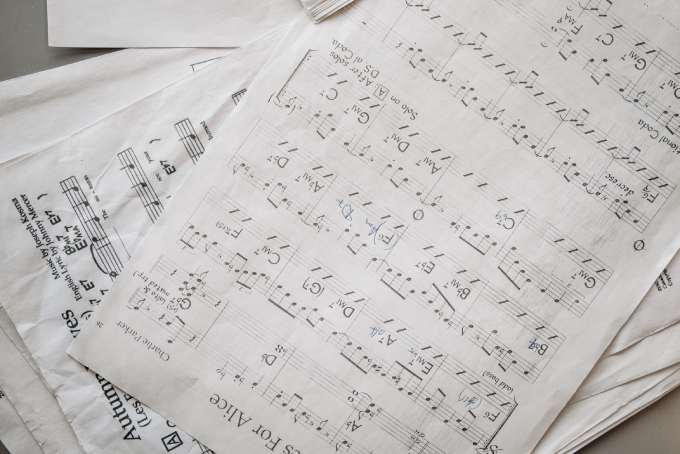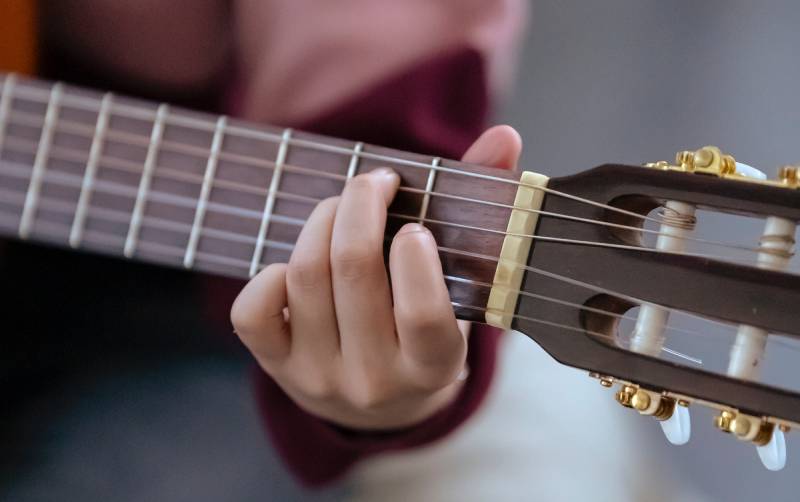
ADRENOCHROME
September 26, 2021
Introduction to Gym Equipment
October 7, 2021- acoustic guitar lessons
- basic music theory
- beginners music theory
- box scales
- easy guitar lessons
- easy music theory
- electric guitar beginner lessons
- first guitar lessons
- first lessons in guitar
- guitar beginner lessons
- guitar chords
- how to form a chord
- how to learn music theory
- how to make a scale in music
- how to practice guitar
- how to practice scales
- how to use intervals to form scales
- indian guitar lessons
- intervals
- intervals and scales
- learn guitar easily
- major scale
- minor scale
- new to guitar
- scales
- starting guitar again
- what are intervals and scales
- what are intervals in music
- what are scales in music
Music Theory 1: Intervals & Scales
also, see Finger Exercises for guitar.
Am sure you have had a good time playing your first song for friends and family. A good announcement about your musical commitment.

The time has now come to put some introductory music theory under our belt.
Why?-you say. Well, it is not mandatory to be a genius in music theory but knowing the fundamentals would make the journey easier and your playing sound more melodious and technical.
What are Intervals & Scales in music?
Every piece of music performed on the guitar that you have ever listened to is composed of notes that are either played by themselves, as in a guitar solo or in groups, as in chords.
The combination of notes used follows a certain pattern and structure that is based on the chosen Key of the song played.
The foundation.
Western music consists of 12 notes in total:

The above diagram shows us all the notes on the 6th string of the guitar. If you play them in succession, starting from the open string (E) and ending on the 12th fret (E), it is known as the Chromatic Scale.
So we now understand: A scale is nothing more than a succession of notes.
In this case, every note from the open string to the 12th fret, beyond which the pattern repeats, i.e. the 13th fret will be E as the open string, the 14th fret will be F as the 1st fret, and so on…
Although this is a scale, it is not a very musical one.
Imagine preparing a dish with all the spices in the world included in the recipe. It would not be very tasty since the flavour of the spices would clash as they would not be compatible with each other. However, a recipe incorporating a selection of spices, based on how they taste when combined, will produce a really tasty dish.
Thus, we have scales that contain a selection of notes and have a name specifically for it, [e.g. the scale of A or the scale of Am ( A minor).]
So how are these notes chosen for a particular scale?
Intervals
This is where the relationship between notes in western music comes into the picture, and it is called Intervals.
We shall consider the scale of C, as it is the only scale without either Sharps or Flats and is the easiest to learn. It is also the scale on which the melody DO-Re-Mi is based. That’s what makes it so memorable, remember?

The scale of C consists of the following notes:
C – D – E – F – G – A – B – (Which then returns to) C.
Taking a look at the diagram which shows us the notes on the 6th string of the guitar from fret 8 to fret 20.
They seem to be spaced unevenly, especially E-F and B-C, also they seem to be on the very next fret (12-13 and 19-20) unlike the rest who have a vacant fret between them.
The fretboard of a guitar consists of frets. Every fret sounds a note when the string is held down. Each fret is differentiated by a change in the sound of the note when played, this difference is called a Half Note.
If we consider alternate frets, then it would be:
a Half Note + a Half Note= a Whole note. For E.g. C to D would be a Whole Note difference as would D-E, F-G, G-A, and A-B.
These Whole or Half notes are called Intervals and their unique pattern defines the Scale.
Interval names
The intervals between notes, relative to the root note, are given names. The naming follow certain rules which are further described below under the topic: Scales
For the C Major scale the intervals are named as:

For the A-minor scale the intervals are different.

Scales
There are so many out there from the normal to the exotic that it would cross your eyes and give you a headache.
It is enough to start with the most popular and widely used scales in most music genres today.
The Major and Minor Scales.
The Major Scale
Based on what we know about Intervals so far, we can rewrite the notes in the C scale as:
C (Whole) D (Whole) E (Half) F (Whole) G (Whole) A (Whole) B (Half) C
and the pattern would be:
Whole- Whole- Half- Whole- Whole -Whole- Half
This pattern is called the MAJOR SCALE.

So the notes:
C – D – E – F – G – A – B is called the C MAJOR SCALE since the scale pattern starts with the note C.
The first note of the scale is called the ROOT NOTE and gives the scale its name.
Let us try to form another scale.
The A Major Scale.
Here we shall use the same Major Scale pattern but change the Root Note to A.
All that means is that we shall start the pattern on the A note which would then name the scale as the A Major Scale.
Whole- Whole- Half- Whole- Whole -Whole- Half

A Major: A – B – C sharp – D – E – F sharp – G sharp – A
Using the same formula, form the Major scale for all the remaining notes;
viz. B, D, E, F, and G
The Minor Scale
The Minor scale follows the below pattern
Whole – Half – Whole – Whole – Half – Whole – Whole
Let us use this formula to form the:
Am ( A minor) scale.
As mentioned the scale gets its name from the Root or starting note. In this case, it will be A.
A (Whole) B (Half) C (Whole) D (Whole) E (Half) F (Whole) G (Whole) A

Am: A -B – C – D – E – F – G – A
Let’s now use this pattern to form the:
Cm (C minor) scale.
Whole – Half – Whole – Whole – Half – Whole – Whole
Remember that the Root note here will be C.

Cm: C – D – E flat – F – G – A flat – B flat – C
Using the same formula, form the Minor scale for all the remaining notes;
viz. B, D, E, F, and G
Note: This pattern of notes which comprise the scale will keep repeating over and over on each string as well as across strings from the 6th to the 1st.
So familiarize yourself with the Major and Minor scales and how they are formed. It may look like a lot of notes on the fretboard but remember they are repetitive.
To start off: learn the C Major and the A-minor scales. whats important is that you firmly implant in your muscle memory the patterns that your fingers follow on the fretboard.
That would be enough because soon you will realize that you do not have to learn different scales for all the notes. Like the notes the patterns are repetitive as well and only the position of the root changes.
In upcoming posts;
We will learn more about practicing scales using: Box patterns.




